© 2023 Dr Margaret Sheppard
Isvara (Shiva)
Isvara (known as Shiva by Hindus) possessed a very powerful mantra (spell) that allowed him to cast a spell on his hand, recite this mantra, then place his hand on the person’s head causing them to immediately burn up into ashes.
According to the myth a very passionate man called Brahma-
After sometime Brahma-
Brahma-
Vishnu immediately changed himself into a beautiful young woman seated on a swing as he was well aware of Brahma-
“She” told him to go and gain consent from his first wife. His wife agreed and he rushed back to inform the beautiful young woman. She was still sitting on the swing but now had a baby with her. She told him to make sure his wife would accept the baby as well. He rushed back to his first wife but she still agreed. This time when he returned she had two children with her. She sent him back again to check his wife would still consent. This process was repeated four more times. Each time he returned with his wife’s consent, she had one more child with her on the swing until she had six children in all.
This time when he still begged her to be his wife as he had gained the consent of his first wife to accept the six children as well, she told him to swear an oath that he was speaking the truth about his wife’s consent, by placing his hand on his head.
By now he had forgotten about the spell that Isvara had placed on his hand with which he had planned to kill Isvara and steal his wife. He readily agreed to take the oath to the beautiful young woman on the swing. But when he placed his hand on his head to swear he spoke the truth, he immediately burnt to ashes.
The “woman” on the swing with the six children then turned into a being with six faces and twelve arms and hands, as she now had six children, and so became the Deity Kataragama who was thus created.
Isvara is considered to be responsible for limb problems and diseases of the skin.
The Shrine Priest at a Shiva/Isvara Temple in the North of the Island
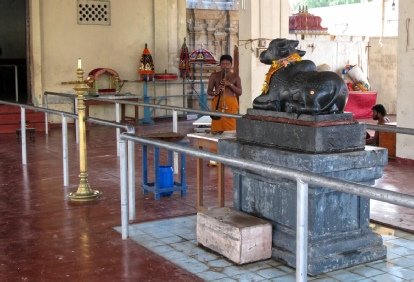
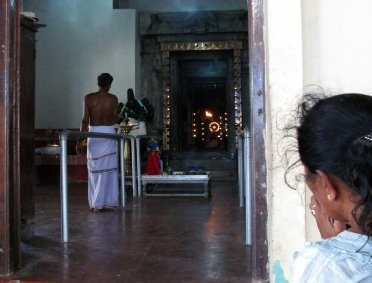
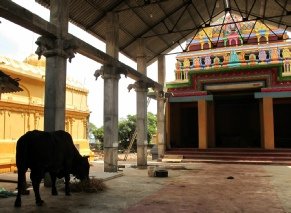
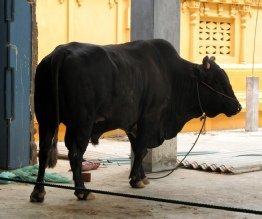
The bull is the sacred animal associated with Shiva/Isvara
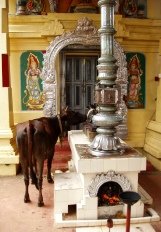
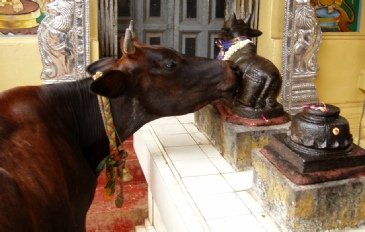
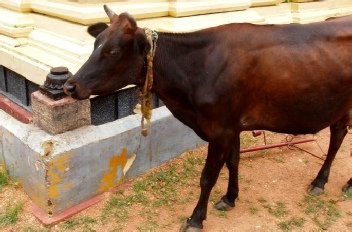
During the Civil War the Koneswaram Temple at Trincomalee in the North of Sri Lanka, was largely deserted. Here the temple cow is “cleaning” Isvara’s bull statue in front of Isvara’s/Shiva’s shrine.
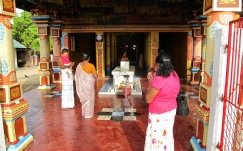
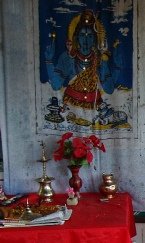
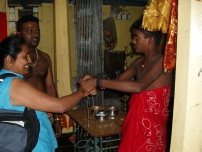
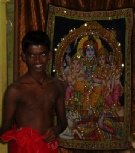
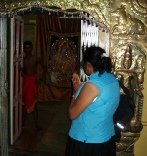
Praying at Temples and Shrines dedicated to Shiva/Isvara
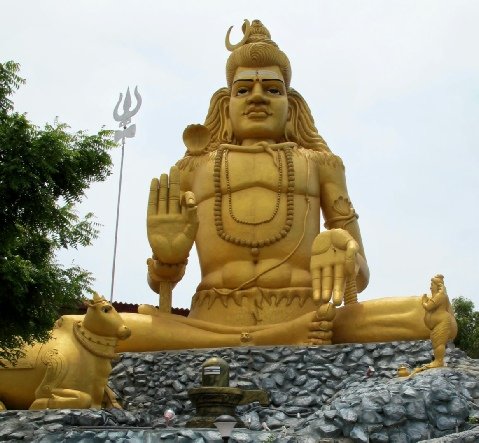
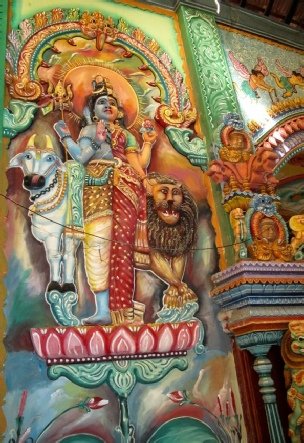
Imposing Statue of Isvara/Shiva at entrnce to Koneswaram Temple Trincomalee, North East
Part of sculpture in entrance to Buddhist Temple, Hill Country
Kataragama here depicted with his two wives, six faces and twelve arms.
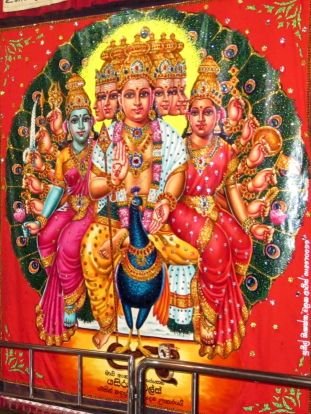
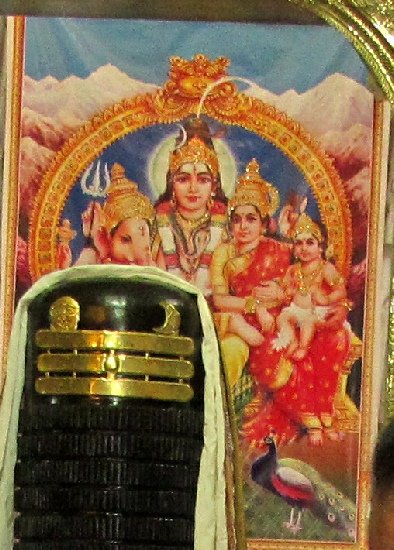
Shiva with his family -
On her lap is her son Kataragama. Their older son Ganesh (with the elephant head) stands besides his father.
(Painting in a Shiva/Isvara Shrine).